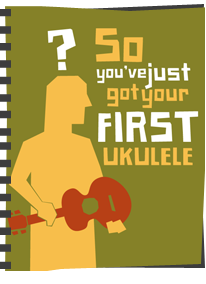Don’t forget to make you nominations for Ukulele Video of the Year.
New Releases
– Harpy Things EP by Des Wong – The first record I know of using a harp ukulele as its primary instrument. And he did an amazing job with it
– The Castaways new CD Miniature Horses. You can buy it on CDBaby
– Square Meter from Kara Square and Piero Peluche
Kickstarting
– James Hill is raising money for his new album Kickstarter-style.
Tabs
– The Kamiki Ukulele Method tabs
– Collection Of Old Tunes For Ukulele by Michael Madden
– Leftover Cuties ukulele chord book
Pictures
– Glass ukulele
– Electric ukulele girl
– Postman Pat is putting the share sell-off money to good use.
– Strange goings on
– Totoro Ukulele
Videos
– Tune up with U and 900
– 25 hour long ukulele session
– Apparently sales of ukuleles have been skyrocketing
– Epic ukulele headstand




